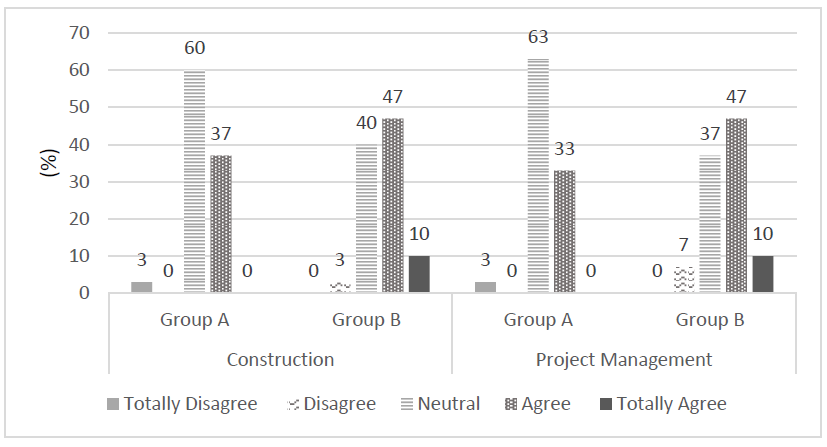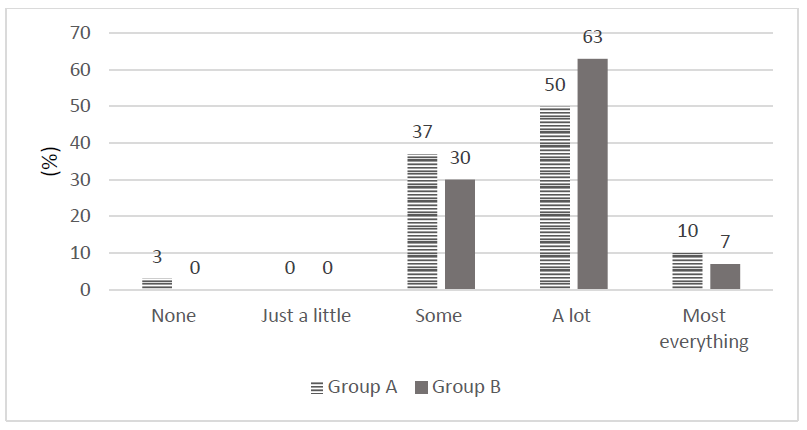ABSTRACT
Many academic programs utilize simulation applications to supplement higher education, but there are only a few applications responding to the need in construction curricula, particularly with a focus on project management. Project management is an interdisciplinary area of study, crosscutting multiple fields including the construction, information technology, and business sectors.
This paper presents the design, development, and test of a research project entitled Project-oriented Educational Research Fostering Excellence in Cyber-infrastructure Teaching (PERFECT). It investigates the effect of a construction project management simulation on construction management students’ engagement and perceptions at the University of Nebraska- Lincoln.
The goal of PERFECT was to develop and study the efficacy of a simulation for construction project time management. This is a common knowledge area in the Project Management Body of Knowledge (PMBOK) standard published by the Project Management Institute (PMI). PERFECT was a pilot module created in a simulated environment and allowed students to be interactively engaged in time management related processes. Participants played the role of a project manager and were required to make management decisions throughout the simulation.
Processes like input, tools and methods, and outputs in PERFECT were designed in accordance with the PMBOK standard. The fully developed application was tested with two groups of 30 construction students: the first group included students with prior project time management knowledge (Group A) whereas the second group consisted of students without any prior knowledge (Group B). The students’ data were captured and retrieved automatically without any human interaction.
A quantitative research method was used for analyzing the data and a retrospective post- survey was conducted to obtain participants’ perceptions of the application. The results indicated the effectiveness of PERFECT and supported the expansion and further development of similar simulation applications. This type of evidence-based learning system not only enhances the validity and reliability of the application, but has a potential for incorporation into the academic arena particularly in construction.
LITERATURE REVIEW
The advent of simulation for educational purposes extends back several decades, however, during this period its presence in education has fluctuated (Harper, Squires, & Mcdougall, 2000). Technological advancement in multimedia, graphical software, and communication was a major catalyst toward adoption into the educational processes. Simulations have some unique characteristics that make them both effective and efficient in education.
Simulations are typically used to decrease the time and cost of learning, and mitigate associated risks in the learning processes. Aviation and medical science are ideal fields for such applications (Hahn, 2010) and, thus, simulations have become essential in those areas with a myriad of robust educational tools being effectively utilized in different forms and styles. Okuda et al. (2009) addressed the role and importance of simulations in medical education in different fields including basic science, physical examination, clinical clerkships, skills training, anesthesiology, surgery, obstetrics, emergency medicine, pediatrics, and critical care at undergraduate and graduate levels.
METHODOLOGY
PERFECT was part of a research project designed in Durham School of Architectural Engineering and Construction to investigate the use of simulation applications in construction programs. The main objective of this paper is to illustrate the perception of construction students on this newly developed construction project management simulation (PERFECT).
The research question in this study was “how do construction students perceive simulation applications and what factors impact their perceptions?” While the effectiveness of PERFECT is shown in another publication (Rokooei, Goedert, & Najjar, 2017), this paper reports on results from the survey. Based on previous experiences in design, development, and testing simulation applications, the general layout of the application was structured to include three instruments: Pre-Quiz, main simulation, and Post-Survey. Main simulation is the core of the application in which instructional contents are provided through educational modules and interactive elements.
DATA COLLECTION AND ANALYSIS

Figure 1: Effect of simulation on interest in construction and project management.
Increase of Interest in Construction Project Management by Playing the Simulation: Participants in both groups also rated if their interests in Construction and Project Management had increased after interacting simulation. A five-point Likert scale was used in which 1 to 5 denoted a spectrum from “Totally Disagree” to “Totally Agree,” respectively. Percentages of each level of agreement is shown in Figure 1.

Figure 2: Simulations are more effective than traditional lectures.
In addition, participants rated the statement “I find simulation instruction to be a more effective learning tool than traditional lectures.” Figure 2 shows the percentage of each level for Group A and Group B.

Figure 3: Learning project management through simulation.
In response to another question, participants rated how much they thought could be learned about project time management through simulation on a 5-point level scale. The percentage of each agreement level is shown in Figure 3.

Table 5: Integration of simulation-based learning throughout construction curricula.
In the last question, participants were asked if they believed simulation-based learning should be integrated throughout the construction program. Participants’ responses were rated on a 5-point level scale, as shown in Table 5.
CONCLUSION
PERFECT was shown to be an effective and engaging supplementary tool to support learning project time management in construction education. Tools like Pre-Quiz, main simulation, and Post-Survey were utilized to determine the level of participant engagement and effectiveness of the intervention. Two groups were established in order to minimize the effect of confounding variables.
Group A had previous knowledge and familiarity of the content (project time management) while Group B did not have prior project time management knowledge. The majority of both groups did not have any previous virtual learning experience which seems a great opportunity for construction educators to incorporate simulation applications as one of their educational tools.
While both groups of students expressed increased interest in construction and project management after interacting with the simulation, Group B showed a more diverse and intense level of engagement. Another major outcome of this experiment was recognizing factors that impacted the performance of students. Considerable difference between the average weight of “learning from mistakes” and other factors makes simulation an effective tool that can be used repeatedly so that through each round students have the opportunity of learning a new concept.
Source: University of Nebraska
Authors: Saeed Rokooei | James Dean Goedert | Asregedew Woldesenbet